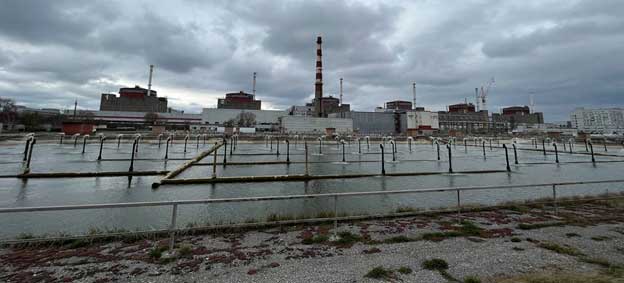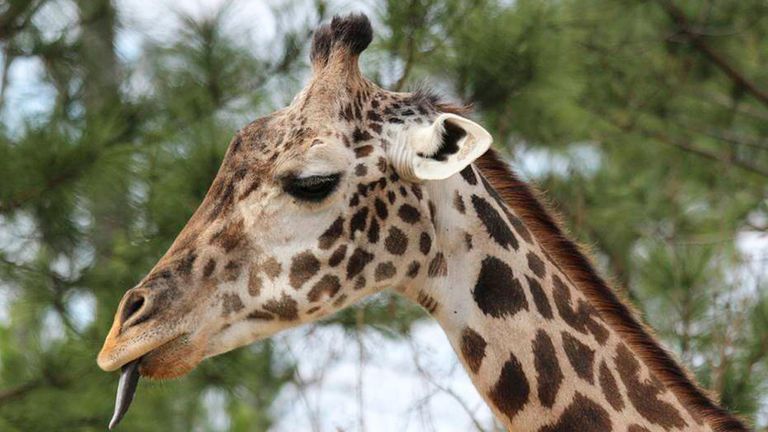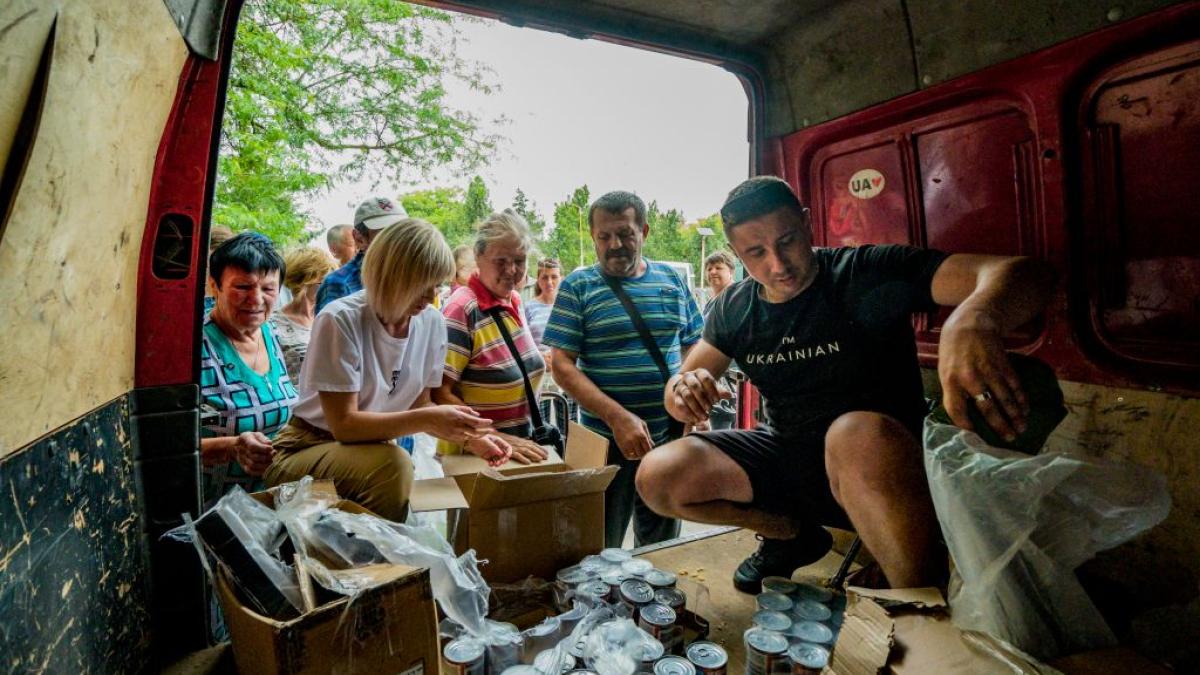Not far from the border checkpoints is the Hamun Lake Biosphere Reserve. Old photos of the ecosystem – which show the lake thronged with flamingos, its surface glittering in the sun – recall the beauty of what was once the third-largest lake in Iran. These days, images of the area show shrivelled-up fish and abandoned boats. In the middle of the lake are ruins that are steeped in legend and where a German archaeologist once researched ancient Persia.
One reason for the drought is that the water of the more than 1,000-kilometre-long Helmand river in neighbouring Afghanistan, which flows into Lake Hamun, has been dammed on the Afghan side. "For years, people in the north of the province benefited from Helmand water and practiced agriculture, fishing and animal husbandry," says Iranian MP Mohammed Sargasi. Now, he says, many residents have moved away.
An agreement from 1973 is supposed to regulate the use of water from the Helmand. In the wake of global warming, however, Afghanistan is also being hit by drought. "We don't even have enough water to drink," complains one resident of Nimrus province. The prestige dam project, which was completed in 2021, supplies the province with electricity and provides irrigation for agriculture.
Potential for more cooperation
Lena Partzsch, professor of political science at the Freie Universitaet Berlin, also sees potential for cooperation. "When water wars occur, it is something of a self-fulfilling prophecy," the environmental researcher warns. "I am not pessimistic, though, because I feel water is first and foremost a resource that promotes cooperation."
One indication of this, she says, is that the Taliban visited Iran last year in the dispute over Helmand. "Rather than investing in armaments, it is important that space be created for negotiations and institutions," says Partzsch, who adds that humankind must adapt to climate change and changing water resources. "Not only technically, but in harmony with the natural world."
A water expert from Afghanistan also hopes for more cooperation. "The evaporation rate in Sistan and Balochistan is high," says Nadschibullah Sadid, who goes on to say that cooperation would be particularly feasible in the field of agriculture. "It makes sense to grow crops where it works. We need to stop wasting water."
Ethiopia's politically explosive GERD dam
The explosive potential of water rights is also evident in north-east Africa. Ethiopia's dam, which will be the largest in Africa when it is completed in 2024 or 2025, is causing regional neighbour Egypt to fear for its water supply and its domestic agriculture, both of which depend on Nile flow. Tensions over how the reservoir will be filled and how much water will continue down the Nile in future have already moved up several notches, at least verbally, towards possible military escalation. The Nile supplies more than 90 percent of Egypt's water needs.
The initially conciliatory-sounding Egyptian President Abdul Fattah al-Sisi also seems to be slowly losing patience in the years-long dispute. From Cairo's point of view, Ethiopia is refusing to mediate and is playing for time. "Let's not reach a point where (the brothers in Ethiopia) touch a drop of Egyptian water, because all options are on the table," Sisi said. "Unthinkable instability in the region" could otherwise follow.
The ongoing power struggle in Sudan, which is located between Egypt and Ethiopia and is also affected by the issue, is further complicating negotiations. There, the president, who is backed by the army, and the former vice-president, who is backed by the RSF (Rapid Support Forces) militia, have been fighting for supremacy since April. Given the complex and difficult situation in Khartoum, a three-way agreement in the dispute with Cairo and Addis Ababa seems practically impossible.
India and Pakistan: old enemies facing new challenges
A dispute is also simmering between India and Pakistan, which are both threatened by water shortages and drought, over several shared rivers.
The best known of them is the Indus – Pakistan's principal river, which rises in Tibet and flows through the Indian part of the disputed Kashmir region. A cooperation agreement brokered by the World Bank has existed for more than 60 years. The two nuclear powers have already fought several wars with each other because of other conflicts. The agreement was seen by many experts as a glimmer of hope and a rare consensus between the hostile nations.
But in January, India suddenly demanded a change to the agreement. Once again, major dam projects are at the heart of the dispute. Pakistan claims that Indian hydropower projects in the Kashmir region are throttling its water supply. "The agreement was great in the sixties," says a government official in Islamabad. After all, he says, it has weathered wars and political tensions. Now, the challenge is a different one, he adds. India, for its part, is accusing its neighbour of a failure to compromise.
One climate expert from Pakistan who is calling for a rapid rethink is Pervaiz Amir. "Considering that all the glaciers in the north of Pakistan and India will have disappeared by the end of the century if melt continues at the current rate, and considering that they are the main source of water for the rivers, Pakistan and India need to talk to each other now," says Amir. "It is a purely technical problem, but it could cause conflict or even war in the future."
Arne Baensch, Johannes Sadek and Anne-Sophie Galli
© dpa 2023
OPINION
Water – a Weapon of War or a Tool for Peace?

Water is used to cool processes at the Zaporizhzhya Nuclear Power Plant in Ukraine. Credit: IAEA/Fredrik Dahl
STOCKHOLM, Sweden, Jul 11 2023 (IPS) - The role of water in conflicts is changing, with more attacks against environmental and civilian infrastructure. Dr Martina Klimes of the Stockholm International Water Institute (SIWI) recently held a lecture describing the shifting security landscape and how water can be both a weapon and a victim of war – and sometimes a tool for peace.
The Kakhovka dam disaster in Ukraine on 6 June is a painful reminder of how collapsing water infrastructure can cause enormous suffering in times of war, sometimes with consequences that last for generations. Ukraine accuses Russia of destroying the dam and using it as a weapon of war.
“That would be in direct conflict with the 1977 Additional Protocol I to the Geneva Conventions which protects civilians in times of war,” says Dr Martina Klimes who is Advisor Water and Peace at SIWI.
On 14 June, she participated in a breakfast meeting at the Swedish parliament together with other representatives from the Stockholm Hub on Environment, Climate and Security of which SIWI is a founding member.
Klimes’ presentation outlined the different roles of water in war:
• Direct impact – where water and attacks on water infrastructure are used as a weapon of war.
• Indirect impact – where military operations harm the environment, for example poisoning water sources or contaminating soil.
• Transboundary impact – where the consequences are felt also in other countries.
During the war in Ukraine, all three dimensions are carefully monitored by local and international organizations to an extent rarely seen in other wars. Already before the Kakhovka dam disaster, Ukrainian authorities estimated the cost of the environmental impacts of the war to be approximately 50 billion euros.
Rivers, groundwater, and soil are polluted, and many national parks are impacted in the country which is described as the most biodiverse in Europe. In 2022, 16 million Ukrainians needed water, sanitation, and hygiene assistance.
By tracking the environmental consequences of the war so closely, the Ukrainian government hopes not just to facilitate reconstruction. Another aim is to collect evidence that could be used in a future war tribunal against Russia.
President Zelensky has said that charges could include ecocide, in addition to the four types of crimes currently covered by the International Criminal Court (ICC). In recent years, the idea of making ecocide a fifth crime enshrined in the Rome Statute of the ICC has started to gain traction.
The parliament of the European Union recently voted to make ecocide part of EU law.
At the United Nations, a commission has assessed gaps in existing international law and presented a set of more far-reaching draft principles on protection of the environment in relation to armed conflicts.
But researchers who have studied Yemen, Libya, and Syria say that attacks on civilian and environmental infrastructure have become more common in the past decade.
“This causes immense suffering for local populations and the impact often goes beyond national borders. We also know that environmental degradation is a risk multiplier that can trigger social instability and violence,” Klimes says.
Meanwhile, a landmark report on the topic – Environment of Peace – was presented last year by the Stockholm International Peace Research Institute (SIPRI), another partner of the Stockholm Hub on Environment, Climate and Security.
At the same time, countries and regions can reduce tensions by strengthening the resilience of ecosystems and humans. Collaborating around for example shared waters can also foster cooperation and peace.
To raise awareness of these complex interlinkages, SIWI works actively to bring together actors with different types of competencies. One example is the Shared Waters Partnership Programme to strengthen transboundary water cooperation.
Every year, SIWI also hosts a high-level panel during World Water Week on water-related security issues. This year the event will take place on 23 August at 11am CET with the theme Innovative Approaches to Support Peace and Conflict Prevention.
Maria Sköld, is Senior Manager, Communications.
Martina Klimes, PhD, is Advisor, Water and Peace, and Transboundary Water Cooperation.
IPS UN Bureau














